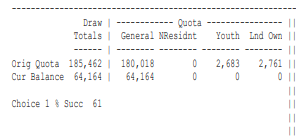D
Deleted member 28227
Guest
Why Colorado caters to the non residents so preferentially while every other western state favors residents so obviously?
If it is just the revenue I don’t get it other than gross misspending why they have to it’s not like our outdoor programs, parks or access is superior to any other state.
This is very complicated question, I'm actually trying to see if I can get the full license and budget data so I can pull everything into spotfire and give some hard numbers, but no it's not gross misspending.
First I think you need to compare Colorado more to Washington when you talk about fish and game, primarily because the state these states have an almost order of magnitude difference in population than WY, ID, and MT and also because they have large metro areas.
CPAW is responsible parks, I'm not sure how you define superior, but certainly chatfield or cherry creek get more users in a day that any single park in MT or WY gets in a month... more than most of them get in a year. This heavy volume requires more enforcement and more maintenance, just extrapolate that throughout the entire budget.
Another important point to consider and one I'm not capable of quantifying is overall state budgets, CO funds CPAW differently than other states and there are programs and directives under the prevue of CPAW that WY fish and game doesn't have to deal with. For instance CPAW has to lease CO State lands from the State land board for them to be open to the public. This isn't cheap and isn't something MT or WY has to deal with. The point being unless you go through the full budget of each state, compare what each game and fish agency is responsible for and how that agency is funded it's impossible to figure out why CO relies more on non-residents.
If you take a look at the report and table in my earlier post on this thread you will see CPAW has done extensive research on other revenue streams that are utilized by neighbor states, and the potential issues that would arise by trying to implement them.









